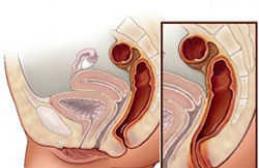Every motorist knows that in order to stop a vehicle, it is necessary to depress the brake pedal. But, sometimes, it happens that when braking, the car begins to lose its directional stability, and it steadily begins to lead to one side of the road.
The first, and most common reason, is the failure of the rubber-metal hinges, or silent blocks. As a rule, torsionally working silent blocks are very reliable, and rarely break. An exception is a factory marriage. The silent block is a monolithic hinge, inside and outside of which there are metal bushings.
Also, silent blocks can be destroyed as a result of careless driving, frequent overcoming of obstacles, in the form of railway crossings or road potholes. In case of failure of silent blocks, the installation angles of the wheels are violated. When driving in the area of the wheels appears.

Cosmetic repairs and adjustments, as a rule, do not lead to tangible results, since the suspension needs a major overhaul. At first, the car starts to work adequately, but at the first, the angle of adjustment of its wheels is immediately violated.

The levers turn out, the wheels move apart, and the car loses directional stability. The suspension of a Kia Sorento car needs to be checked periodically, and when it appears, first of all, you should pay attention to the hinges. Before overcoming obstacles, to extend the life of the suspension joints, experts recommend releasing the brake pedal. This action will allow the unbraked suspension to endure impacts with less damage.
First you need to figure out why, in principle, a silent block is needed? In ordinary language, this is an “intermediary” between a rigid body and a suspension, by the way, the suspension includes not only a subframe and a lever, but also a spring (depending on the model), a stabilizer, struts and the like. That is, you must understand that if you connect the metal elements directly, then you will hear about all the bumps in the cabin. Therefore, such “intermediaries” are used to avoid both the wear of other parts and excessive noise in the cabin. The first is the most important nuance.
Device - what does the silent block consist of?
In simple terms, this is a classic cylinder into which a rubber “gasket” is inserted, there are also polyurethane ones, but more on that later. Also in the design there is such an element as a sleeve.
The sleeve ensures the safety of the rubber elements during operation, prolonging the life of the element.
That is, from the foregoing, it is not difficult to understand that all the pits and bumps that are present on our roads, the suspension works out much softer, precisely thanks to the rubber inserts.
Types of silent blocks
A car owner who has ever wondered about replacing these suspension components knows perfectly well that there are two main types of silent blocks. So:
1. Rubber is traditionally made on the basis of rubber, but they have a huge list of disadvantages:
Low resource;
- do not tolerate environmental influences (weather conditions, reagents);
- an unpleasant sound even with new parts.
There is also a variety of rubber silent blocks, when the “gasket” itself is made not solid, but composite. According to experts, such a device is more reliable and the suspension experiences fewer shocks.
 Silent block ss20 for VAZ
Silent block ss20 for VAZ
2. Polyurethane is much more efficient than their younger "colleagues". The benefits include:
Better absorption, shocks;
- improves the behavior of the car as a whole;
- more durable.
The only drawback, according to motorists, is their cost. But, as they say, a miser pays twice.
Resource
Many people ask this question, but what is the real life of silent blocks? It is impossible to fully answer this question, because everyone has different conditions and driving style, and as you understand, this is almost a fundamental nuance when using such elements. Yes, and the 80,000 - 100,000 km declared by most manufacturers, mileage in domestic realities, look simply ridiculous. In fact, a completely different picture is obtained, the service life rarely exceeds 40,000-50,000 km, and this is taking into account the good quality of the roads.
Also, don't forget that city cars require more frequent part replacement. The reason lies in the use of reagents in cities, as already mentioned above, they make an important contribution to the service life.

Separately, it is worth clarifying about the climate, for example, for the northern regions of the country, polyurethane silent blocks are not suitable, unless, of course, the car will stand in the garage in the cold. According to most manufacturers, the recommended temperature for using polyurethane, in particular for suspension, is not lower than 20-25 degrees.
If resource of elements is exhausted, remember that this entails problems of a different nature, including:
A noticeable decrease in vehicle handling, especially on suburban road sections. There is a steady understanding that the car is heeling, a backlash appears, which is perfectly audible when entering a turn. This is caused by the fact that silent blocks no longer work out bumps and pits, and all coating errors fall directly on metal units.
Do not forget also that worn elements seriously affect the wear of the tire tread.
Destruction of levers in the attachment points.

What can break in the silent block and what are the reasons for the failure?
As a rule, metal fragments break extremely rarely. Therefore, if you notice even a slight knock, creak, you should immediately take action for repair, so as not to subsequently “get” into a major repair with the replacement of levers. Often, not timely replacement of silent blocks leads to breakage of the levers at the attachment points. What can cause wear?
1. Oddly enough, incorrect initial tightening of the bolts can lead to failure. A beginner, and even an experienced master, should remember that any bolt securing the silent block is tightened after the car is lowered from the lift, so to speak, “live”.
Unfortunately, but a huge part of the services pays little attention to this fact and puffs on weight. And when the car then lowers and the suspension takes on the entire mass of the car, the rubber twists, as a result of which the silent block plane itself is distributed unevenly. Accordingly, failure in this case will be much earlier, and the rubber will tear precisely at the twisting points. Therefore, it is recommended to be present during the replacement of these elements and point out some rules to the so-called "masters" or choose a good service.
2. Violation when installing parts in the "nests" themselves. Do not forget that some manufacturers even mark which side to insert the part. Many people neglect this rule, which also brings the end of the service closer.
3. Significantly exceeded the period of use. As a rule, this occurs only among negligent car owners who do not follow their "iron horse". Rubber simply dries out with age, cracks and subsequently breaks from exposure.

Therefore, when buying from hand, pay attention not only to the transmission.
4. Few people pay attention to the fact that in urban driving conditions, when a huge amount of reagents are poured onto the asphalt, it is the “chemistry” that causes destruction, especially rubber “eggs”.
By the way, few people know, but a simple car oil, with which some lubricate rubber bands, does not help extend the service life, but, on the contrary, only leads to the impossibility of application.
During the development of mechanical engineering, it became necessary to create a unit in which there is no friction. He had to make sure that the movement of the suspension parts occurred due to the elastic deformation of the rubber. A silent block is a fastener made of metal bushings.
Between the latter is an insert of their soft and practical material. This consumable does not require lubrication, has no gaps and is not subject to wear for a long time. The spare part can be made of rubber or polyurethane. Its main function is to reduce the rigidity of the connection of suspension parts.
With its help, oscillations and vibrations are damped, since it is the silent block that accounts for most of the shock loads that are obtained by the suspension. Thanks to the use of a rubber-metal hinge, the geometric properties of the suspension are ensured. Traffic safety depends on this.
Where is the rubber mount located?
This part is important, so you need to monitor its work and try not to miss the moment when it can fail. The part can be located in different places:
- in suspension
- in the places where the levers are attached,
- in the anti-roll bar.
Most of the load falls on the rear suspension bars. Therefore, in this place, the rubber-metal hinge changes more often than in other areas. The part should be replaced every 100-200 thousand km. run.
This figure can be significantly reduced if the driver practices extreme driving. Regardless of the car, experts recommend diagnosing every 50 thousand km. A timely audit will allow you to avoid the withdrawal of the car at speed, which means it will ensure safety on the road.
Diagnosis of malfunction of silent blocks

There are many ways to determine if a part is defective. For a visual inspection, it is recommended to call in the pit, clean it of dirt. Silent should not have cracks, breaks or other visible damage. Masters can assume a breakdown even by wheel alignment. When the silent blocks wear out, the levers change their position to the wrong one.
The driver can also determine the presence of a problem:
- on the tires of the wheels, the sides begin to wear out more strongly,
- when driving, noise and vibration become unnatural,
- vehicle stability deteriorates significantly.
If one or more signs were found, the suspension is jacked up and the wheels are completely removed. So you can check not only the operation of the part itself, but also the play of the levers.
Particular attention is paid to rubber parts. They should not swell or have even the smallest cracks. If such defects are found, the part is immediately replaced with a new one. As the rubber wears out, it loses its elasticity. This leads to the fact that the spare part ceases to perform its main function.
If you do not change it in a timely manner, problems with the car can be global. For example, metal hinges will break the seats over time, so in the future you will have to change several parts of the car at once. The consequence of this is that the load begins to be concentrated on the component parts of the suspension. The result is its loosening.
What may require replacement

Most often, violations in the operation of the silent block are associated with careless driving, regular overcoming of obstacles, for example, railway crossings. The general condition of the suspensions and the loading of the machine affect its resource. It can be damaged by:
- frequent and sharp fluctuations in temperature;
- the presence of aggressive chemical compounds;
- poor condition of shock absorbers, springs, and other parts.
Silent block replacement

This part is consumable, and it has a small cost. Therefore, its repair is almost never carried out. However, there are models that can be easily disassembled. This view can be repaired if necessary. Replacement will require a jack and wrenches. Usually the process itself is simple, so most motorists can easily handle it.
If there is no time, you can always contact the service station, where the work will be carried out with better quality. The most difficult part is pressing the part into the mounting fixtures. This will require a special tool or mandrels of a suitable diameter. The latter can be replaced with a piece of pipe. Machine oil or another smear is also required.
If the hinge has not yet been knocked out, this procedure will have to be done independently. After the part is removed, the levers are thoroughly cleaned. Please note that the seat should not have mechanical damage and scratches. It is better to replace the silent block in other units with the masters, since this manipulation is quite complicated and requires professional skills.
When replacing a part in the suspension, you will have a choice: give preference to the rubber type or polyurethane. The latter type will last much longer, but it is more expensive. A properly installed rubber-to-metal hinge will help the suspension work in the intended mode. It will perfectly absorb shocks, reduce noise.
After installation, it will be necessary to adjust the toe and camber angles. Some experts prefer polyurethane products, as they are less subject to wear on Russian roads and can withstand significant loads.
Thus, if it becomes necessary to diagnose or replace the silent block, this can be done independently or with the help of specialists. Proper selection of parts will improve control over the vehicle, reduce wear on other parts.
Modern models perfectly withstand peak loads and are not subject to destruction, have progressive compression characteristics and do not produce chemical emissions into the air. If the part is not replaced with a new one in a timely manner, other mating parts may break, and sometimes this leads to damage to the body. The elements of the front suspension withstand the greatest loads, so they have to be changed more often.
Driving a car on domestic roads entails a number of surprises, which eventually result in various running gear malfunctions car parts and suspension. The undercarriage of the car consists of components and parts that provide good handling, safety and comfort while driving. In the event of a malfunction of at least one component, a violation occurs in the operation of the chassis, which leads to various knocks and problems with the controllability of the car. Therefore, when the first signs of suspension malfunctions are detected, it should be carried out immediately.
I would like to note that malfunctions of the chassis can appear both suddenly, for example, after a car gets into a pit, or for some time. A characteristic knock may indicate the imminent release of a unit or part, which may intensify over time, and there may also be problems with driving a car.
How to determine the malfunction of the chassis and suspension of the car
If the vehicle pulls to the right or left while driving
The wheel alignment is broken or the tires are different. Also, this behavior of the car often causes unequal. If, after checking and eliminating the above reasons, the car still goes to the side, in this case the situation is complicated by the fact that one of the suspension parts and even deformation of the car body can be a problem. In any case, a complete diagnosis of the chassis will be necessary to identify the problem.
Possible problems with the chassis or suspension of the car
- The front suspension arms are deformed;
- Damaged upper shock absorber support;
- The stiffness of the springs of the racks is different;
- The stabilizer bar has failed;
- Problems with the brake mechanism of the wheels. The wheel is not completely released;
- Wheel bearing damaged or severely clamped;
- The parallelism of the front and rear axles is broken;
If the vehicle sways when cornering or braking
- Defective or out of order suspension struts (shock absorbers) or vehicle springs;
- Worn stabilizer bar bushings;
Vibration in chassis while driving
- Uneven or low tire pressure;
- Worn or pinched wheel bearings;
- The steering joints are worn;
- Loose wheel nuts
- Missing or incorrect wheel balancing;
- Damaged or deformed wheel disk;
Knocks and noises of the suspension while driving
- Weakened mounting racks or bars of anti-roll bars;
- Does not work, which means the shock absorber is out of order;
- Worn ball joints and steering tips;
- Damaged or out of order elements;
- Worn silent blocks of levers;
- Damaged or broken strut spring;
If the suspension breaks
- Disk or tire deformation;
- Inadmissible clearance in the wheel bearing;
- Non-working shock absorber, broken strut spring or damaged spring;
- Violation of the geometry (deformation) of the suspension arms, the steering knuckle and the axis of the suspension arms;
If shock absorbers knock
- Deterioration of bushings of fastening of shock-absorbers;
- Shock absorber drip (a sign of its imminent failure);
- Worn shock absorber support;
- Weakening of the shock absorber to the vehicle suspension;
- Wheels wear unevenly;
- Not correct;
- broken;
- The brake system of the car is not working properly;
- Deformed suspension arm;
- The geometry of the car body is broken;
If there is a creak when cornering while braking
- Shock absorbers failed
- Broken stabilizer bar bushings;
And in the continuation of the material on the chassis and suspension of the car, watch the video
Let's imagine the situation, you come for diagnostics and the master says that it's time to change the silent blocks. But you don't know what it is. In this article we will tell you: what is a silent block in a car, why it is needed and why to change it.
What it is
A silent block (it’s correct to say and write like that, and not “salen block” or “silent block”), or in another way a rubber-metal hinge, represents two metal bushings, between which there is a rubber insert. They serve to connect suspension parts and, due to the elastic insertion between the bushings (rubber or polyurethane), dampen vibrations transmitted from one node to another.Where is the silent block installed? They are found both in the front suspension of a car, for attaching levers, anti-roll bar, and for connections in the rear suspension. They are also used to mount the gearbox and engine.
How to check and what resource
How to understand when it's time to change silent blocks? Usually, they serve up to 100,000 km, but in Russian conditions, an inspection should be done every 60,000 km. You can understand if the suspension silent block has worn out according to your feelings. If the car has become worse to drive or the reaction to the steering wheel has become "cotton" with a long delay - this is a sure sign of a worn hinge. For greater certainty, you need to contact the service or do the control of rubber-metal joints yourself.Visual inspection is carried out as follows: you need to call on the pit and look at the silent block clean from dirt. There should be no cracks or breaks in the rubber part. It is desirable at the same time to imagine what the new one looks like. An indirect sign is considered to be a camber / convergence curve, if it used to be correct. When the silent blocks are torn, the levers become a little crooked.
It is necessary to check the play in the silent blocks and, if it is excessive, replace it urgently.
What causes an untimely replacement? If they are heavily worn, the vehicle may move at speed. Those. The car will roll from side to side. Another sign of wear is uneven tire wear. Do not hesitate to replace, because. they can destroy the mounting points of the hinges, and then, for example, you will have to change the front suspension arm assembly.
Ordinary rubber silent blocks serve up to 100 thousand km, and maybe 40 and 60 thousand. For example, more than 150,000 km go in the rear beam, 60-80 thousand in the front suspension. It all depends on the operating conditions. As for polyurethane, according to the idea, the fact that they last 5 times longer is a marketing ploy, no one really checked it. But they will last 2-3 times longer than rubber ones. Plus, they are resistant to severe frost, when rubber salenblocks can crack, which means they will last longer. Also, polyurethane is not afraid of oil, this is also a plus for their mileage.
Polyurethane or rubber bushings
If the car has rubber bushings and silent blocks in the suspension, which can be replaced with polyurethane parts, then only improve the characteristics of the suspension and its operation. Polyurethane silent blocks last at least 5 times longer than rubber parts. The only drawback of polyurethane is the higher cost compared to rubber products (more than 5 times), but you can save on replacement. Polyurethane bushings improve the car's road behavior by reducing unwanted deformations in the suspension and eliminating the "squeezing" effect inherent in rubber parts. This means that the suspension always works in the mode provided by the designers. Properly installed and matched, polyurethane parts perform better in absorbing shock, vibration and noise than rubber.
Polyurethane bushings improve the car's road behavior by reducing unwanted deformations in the suspension and eliminating the "squeezing" effect inherent in rubber parts. This means that the suspension always works in the mode provided by the designers. Properly installed and matched, polyurethane parts perform better in absorbing shock, vibration and noise than rubber.
If you want to improve handling - polyurethane silent blocks are what you need. If you calmly move from one point to another, then the choice is in favor of conventional rubber-metal bushings.









